In a technology-driven culture where planned obsolescence and perpetual upgrades are the rule, electronic waste – the computer hardware and consumer electronics we continuously discard – is becoming a problem of epidemic proportions. 20 to 50 million tons of it are generated annually, most of which gets shipped off to places like India, China and Kenya, where complex scavenger economies have sprung up around vast electronics dumping grounds filled with leaking toxins and treacherous chemicals. Foreign Policy just published a powerful photo essay documenting this very real footprint left by our so-called virtual lives.
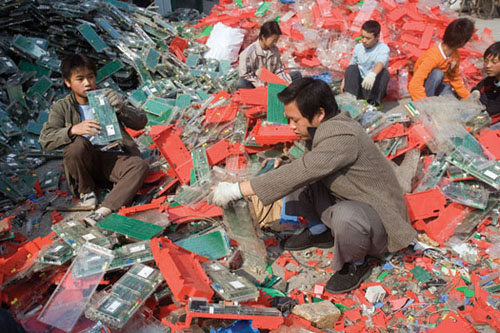
Of course it’s not just what we throw away that’s problematic, but what we consume. Many today are awakening to the fact that most of the industrial conveniences we enjoy – abundant food shipped from anywhere, cheap transportation, and various other luxuries – carry a dire hidden cost to the planet’s fragile climate and ecology. Like it or not, instant and ubiquitous communication through digital networks also requires fuel. It was recently estimated that the average Second Life avatar consumes as much energy annually (all those servers huffing and puffing) as the average Brazilian.
There are other stories that reveal the uncleanness of our technology. Read this section (paragraphs 45 and 46) of Gamer Theory about the tragic case of coltan mining in Congo. Coltan is a rare mineral used to make conductors in the Sony Playstation, and its scarcity and high demand have made it the source of violent conflict in that country.
These are problems that are difficult to wrap one’s mind around, so totally do they challenge our fundamental patterns of existence. One can begin, I suppose, by acting locally. On a crisp, sunny day in New York this past January, walking across a large stretch of asphalt on the north end of Union Square usually populated by organic farmers’ stalls or packs of skateboarders idly rehearsing their moves, I found myself standing before a sea of old computers, cellphones and other discarded electronics spread out across the ground. As I stared agape, energetic volunteers, bundled up against the cold, darted around the piles, sorting, wrapping and carting the junk into a large truck. It was a computer recycling drive organized by the Lower East Side Ecology Center in partnership with the NYCWasteLe$$ program. A heartening sight that I couldn’t resist recording with my cameraphone.
Here’s a little photo essay from our neck of the woods:
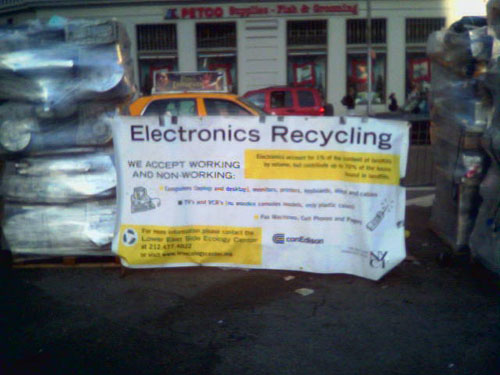
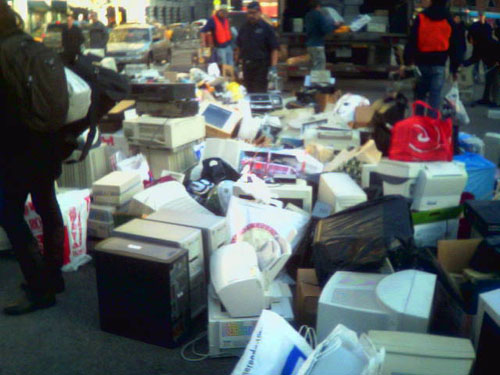
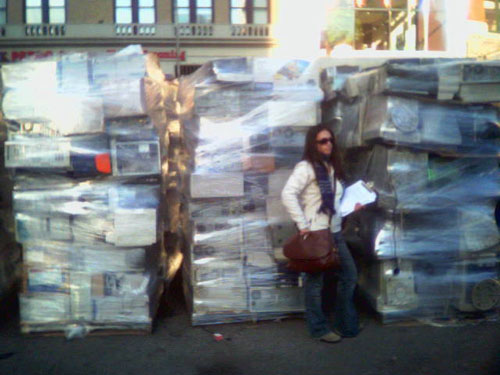
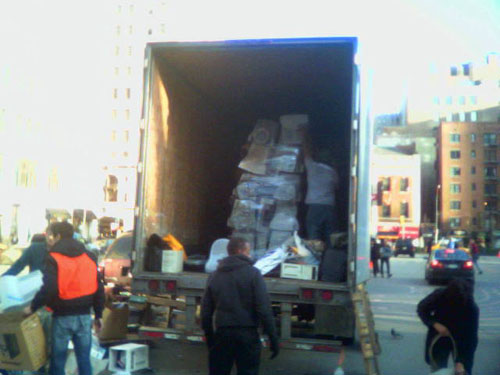
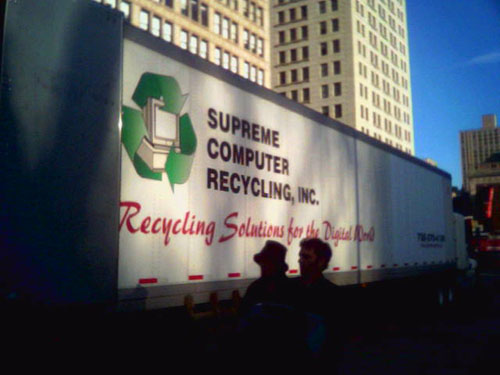
if:book
A Project of the Institute for the Future of the Book

If we seriously want to address such unauthorised cross border deliveries of WEEE we must basically understand the motive behind. In my opinion, most of the shipments of WEEE are coming from developed nations to the developing nations mainly because the processing overheads are much higher there in comparison to the developing nations. Over and above that the shipper gets some money against the sale of such material and save processing costs.
It may be advisible to look in to the U N Initiative of solving the electronic waste problem, commonly known as StEP to address such issues.
B K SONI
INFOTREK SYSCOM LIMITED
BOMBAY, INDIA
+91 9867729662
Probably worth pointing out Andrew O’Hagan’s essay in the most recent London Review of Books – it’s a breathtaking look at how we deal with trash, though not specifically the electronic kind.
A handful of initiatives are starting to organise around this sort of waste. One very successful UK one is Access Space in Sheffield, where old computers are collected from businesses throwing them out, then rebuilt using Linux operating systems and freely available for anyone who wants to drop in and learn hardware or software skills. It doesn’t cost anything to spend time there, and the only condition is that when you’ve learned something you have to be willing to teach it to the next newbie who comes in and wants to learn. It’s been phenomenally successful in bringing really useful and empowering tech skills to people some of whom were unemployed or even homeless before; it also embodies a much more sustainable approach to technology than that exemplified by the usual pattern of planned obsolescence and all its hidden horrors.